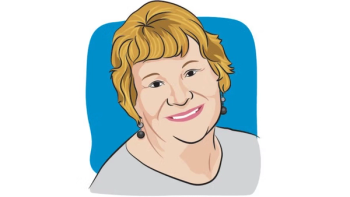
Darzalex Shows Potential as New Standard of Care in Newly Diagnosed Patients with Myeloma
The combination of Darzalex (daratumumab), Revlimid (lenalidomide) and dexamethasone significantly reduced the risk for disease progression in patients with newly diagnosed multiple myeloma.
The combination of Darzalex (daratumumab), Revlimid (lenalidomide) and dexamethasone, also known as Darzalex-Rd, reduced the risk for disease progression or death by 44 percent among patients with newly diagnosed multiple myeloma who were not candidates for high-dose chemotherapy and autologous stem cell transplantation, according to a prespecified interim analysis of the phase 3 MAIA study.
In turn, lead study author Thierry Facon, M.D., of Claude Huriez Hospital in Lille, France, noted the trial results support the regimen to become the new standard of care for these patients.
“We see a very strong clinically significant benefit in extending survival without the cancer getting worse, with no major safety concerns,” he said during his presentation at the 2018 American Society of Hematology (ASH) Annual Meeting, held Dec. 1 to 4, in San Diego. “In older patients who are not candidates for stem cell transplantation, these are very encouraging results.”
Currently, Revlimid-based therapies are a standard of care for patients with newly diagnosed, transplant-ineligible multiple myeloma; however, previous studies have shown that the addition of Darzalex to standards of care in both the relapsed and refractory settings reduced the risk for disease progression or death — also known as progression-free survival – by more than 50 percent.
Therefore, Facon and colleagues conducted the randomized, open-label, multicenter phase 3 MAIA study — designed to evaluate Darzalex-Rd (368 patients) compared with Revlimid and dexamethasone (Rd; 369 patients) in 737 transplant-ineligible patients with newly diagnosed multiple myeloma.
In the treatment arm, patients received 16 mg/kg of Darzalex intravenously for the first two 28-day cycles, then every two weeks for cycles three through six, and then every four weeks for the seventh cycle on. Both arms received 25 mg of Revlimid on days one through 21 of each 28-day cycle, and 40 mg of dexamethasone once a week for each cycle. Patients continued on treatment until disease progression or unacceptable toxicity.
Progression-free survival served as the primary endpoint of the study, and secondary endpoints included overall response rate, minimal residual disease (MRD)‑negativity rate and safety
Patients were a median age of 73, and the majority were men (52 percent) and white (92 percent). Per the multiple myeloma international staging system, 27 percent of patients were stage 1, 43 percent of patients were stage 2, and 29 percent of patients were stage 3.
The researchers were able to determine cytogenetic risk level in 642 patients, of which 86 percent were at standard risk for the disease, and 14 percent of those were at high risk.
After a median follow-up of 28 months, patients treated with Darzalex-Rd demonstrated a significant improvement in progression-free survival, with a median that has not yet been reached, compared with 31.9 months for patients who received Rd alone. The progression-free survival rate at 30 months was 71 percent in the Darzalex-Rd arm compared with just 56 percent in the Rd group, respectively.
Similarly, the overall response rate was superior in the Darzalex-Rd group compared with those who were given Rd (93 percent vs. 81 percent), which included stringent complete response (30 percent vs 12 percent), complete response rate (17 percent vs 12 percent) and very good partial response (32 percent vs 28 percent). However, the partial response rate was higher in the Rd group (28 percent vs. 14 percent).
Facon also reported that the MRD-negative rate was, “greater than threefold higher” with DRd versus Rd at 24 percent compared with 7 percent, respectively.
The safety profiled of Darzalex appeared consistent with those found in previous studies. The most common side effects from treatment with Darzalex-Rd included neutropenia (50 percent), lymphopenia (15 percent), pneumonia (14 percent) and anemia (12 percent). Infusion-related reactions occurred in 41 percent of patients, of which only 3 percent were grade 3/4.
"These data underscore the consistent clinical profile observed among newly diagnosed patients with multiple myeloma receiving Darzalex therapy, including for those who are transplant ineligible," Yusri Elsayed, M.D., M.H.Sc., Ph.D., vice president and hematologic malignancies disease area leader at Janssen Research & Development, LLC, said in a release. "This is the third study in newly diagnosed patients that has met its primary endpoint, showing Darzalex continues to provide strong evidence of clinical benefit in combination with standard of care regimens in the treatment of multiple myeloma."




